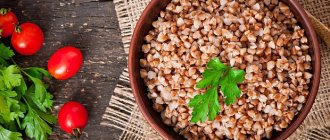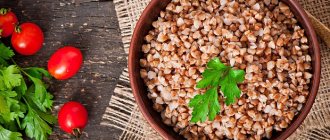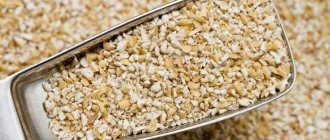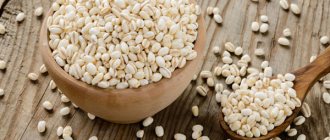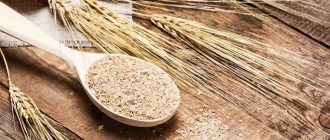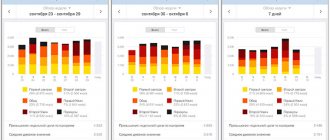© magone — depositphotos.com
Share:
The Paleolithic diet (Paleo diet) is based on the supposed diet of people who lived in the Stone Age. The menu for such a diet does not include dairy products, grains, sugar and any other food that has undergone any processing and contains unnatural ingredients.
This type of nutrition is aimed at consuming high-quality protein foods (meat, fish, seafood, eggs), as well as fiber-rich vegetables, fruits, nuts and berries. In other words, the diet involves eating only those foods that were available to the hunter-gatherer caveman.
The Paleo diet is controversial. And although the athletes who have tested it themselves are very pleased with the results, the new type of nutrition also has plenty of critics and opponents.
Pros of the Paleo Diet
Sugar level. Because on a paleo diet you eliminate all types of refined sugar from your diet, it is easier to avoid sudden spikes in blood glucose levels, as well as the feeling of fatigue that occurs when sugar levels drop. If you have diabetes, you should consult with your doctor to see if he approves of the Paleo diet for you. Either way, if you just want to feel better or lose weight, monitoring your sugar levels is a great way to do it.
Gluten Free. On a paleo diet, you automatically eliminate any wheat or other grains that contain gluten. So essentially, on Paleo you are also eating a gluten-free diet. There is a lot of evidence that gluten is problematic for the digestive system, directly leads to weight gain and is an allergen.
Sleep quality. By cutting out all artificial additives, you will find that your body naturally gets tired in the evening. This happens because the serotonin that your brain releases as a signal that it's time to sleep is not blocked by artificial substances from refined foods. And when you start to get tired in the evening, you need to give your body the opportunity to rest. And in the morning, wake up early and feel energized. On a paleo diet, your body will return to its natural circadian rhythm.
More energy without counting calories. By following a paleo diet, you get a well-balanced meal with proteins, fats and carbohydrates from natural foods. This is a great way to be active during the day without resorting to, for example, energy drinks and other tonics. Unlike other diets that focus on reducing calories, the Paleo diet allows you to eat until you feel full. And also eat any time you feel hungry. Therefore, you do not experience a shortage of energy when you really need it.
Paleo is a detox for the lazy. By giving up many of the usual things in modern life: trans fats, MSG, refined sugar, gluten and other artificial additives, you give your body a rest. By getting more antioxidants from fruits and more fiber from vegetables, you are gradually detoxifying your body. Overall, it has a detoxifying effect and you will feel lighter and clearer in your mind. The best part about this is that detox does not involve restricting the amount of food you can eat. There is no need to fast or drink only green juice. You eat normally (following paleo principles), so this is a great detox for the lazy.
These benefits of the paleo diet are more about health issues. You naturally get a slim and fit figure as a bonus to all of the above.
Criticism
While those who choose the Paleo diet enjoy excellent results that go well beyond endurance and leanness, opponents question the principles of such nutrition.
In 2015, the prestigious British Dietetic Association recognized cave eating as the worst option for losing weight. According to members of the Association, it is unbalanced, questionable, and risky due to a lack of nutrients.
Nutritionists also believe that the scientific basis for the benefits of such a diet is only partially correct, because evolution does not stand still, which means that our genes differ from the genes of our ancestors.
Some experts emphasize the dubious results when losing weight, since large plumbs cannot be achieved here. Gastroenterologists and therapists note that the effectiveness of treating intestinal diseases and autoimmune diseases has not been proven.
Despite criticism from experts, the diet continues to gain popularity. Among her fans were such Hollywood celebrities as Miley Cyrus, Megan Fox, Jessica Biel, Jack Osbourne and even the stunning Uma Thurman.
Cons of the Paleo Diet
It is not simple. It will take all your willpower and ingenuity not to relapse. Birthday pizza? Cakes in a cafe with friends? Grandma's apple pie? Ice cream in the park? All this is paleo-banned. The temptations are endless. Even the usual business lunches for the most part do not fit the canons of the paleo diet. Therefore, stock up on lunch boxes and may the Force be with you.
It's not budget friendly. Fast and junk food today is quite cheap, but does not lead to health and slimness. No matter how many calories the labels promise you, it doesn’t matter.
What are the benefits of the Paleo diet and its downsides?
The principle of eating only high-quality, that is, fresh, environmentally friendly products is far from new and it is unlikely that anyone will deny its usefulness.
The authors of the paleo diet only “tailored” a beautiful “legend” to this principle and formulated clearer and more limited postulates. A person who is on this food system does not need to constantly count calories or carbohydrates (as, for example, in the Atkins diet or its “stripped-down” version - the Kremlin), he is not limited in the consumption of fats, vegetables or fruits (as in the Dukan protein diet ). All he needs is to carefully choose the products that come to his table. In addition, since this diet is not low-calorie (allowed foods can be eaten in any quantity until the “satiety signal”) and does not slow down the body’s metabolism, there is no “withdrawal syndrome” (unless, of course, you suddenly start eating exclusively fast food and Coca-Cola - but other mechanisms and “syndromes” will work here). Now in our country the brochure written by Robb Wolf “Paleo Diet - Living Nutrition for Health” is very popular. In it, the author describes his experience of being on this food system and gives some recommendations.
However, eating exclusively fresh and organic foods will cost a significant pretty penny - it’s not for nothing that the paleo diet is called the “diet for the rich.” In addition, preparing these products requires quite a long time and certain culinary skills (as opposed to throwing semi-finished products into the microwave).
Another important negative aspect of this diet is the heavy load on the kidneys, which take on all the work of removing protein waste products. Therefore, if you have any deviations in their work, this diet is strictly contraindicated for you. In any case, as with any other diet, before using it, undergo a full examination and consult with your doctor.
Paleo Diet Food List
What can you do on the paleo diet?
As with any diet, variety is important on Paleo. No matter how healthy the products are, you may get tired of the same menu day after day and lose interest.
Here is a list of some of the most popular foods you can eat on the Paleo diet. They are easy to find in most stores and provide great opportunities for culinary experimentation:
Meat, poultry, game and offal. There are no restrictions in this section, except that the choice of fish and animals raised without modified feed in natural conditions is preferable. Beef, lamb, lamb, veal, pork, rabbit, chicken, duck, turkey and all offal.
Fish, shellfish and other nasty things. Cod, tuna, mackerel, haddock, tilapia, herring, salmon, pike perch, trout, anchovy, perch, sea bass, halibut, mussels, shrimp and other sea creatures.
Eggs. Chicken, quail and duck eggs. For those who love experiments, ostrich ones are also suitable.
Vegetables, root vegetables and mushrooms. If something went wrong in hunting and fishing, Paleolithic man had to use gathering skills. Wild vegetables are unlikely today, so we choose organic ones in the store and at the market.
Spinach, chicory, chard, lettuce, cabbage, seaweed, arugula, beets, watercress, bell peppers, leeks, asparagus, celery, cauliflower, tomatoes, onions, cucumbers, artichokes, avocado, broccoli, kohlrabi, eggplant, green onions and Brussels sprouts. Zucchini, pumpkin, radish, parsnips, carrots, turnips, sweet potatoes, Jerusalem artichoke.
Even ostrich eggs are allowed on the paleo diet. Photo: Globallookpress
Fruits. Apples, pineapples, berries (blackberries, strawberries, blueberries, cranberries), oranges, bananas, grapefruit, figs, mangoes, kiwis, coconuts, pears, dates, peaches, apricots, nectarines, watermelon, cherries, plums, papaya, lemon, persimmons , pomegranate, grapes, passion fruit, tangerine and melon.
We remember that sweet fruits and paleo desserts are only allowed sometimes, as an exception. Eating them in large quantities on a daily basis is not recommended.
Fats, nuts and seeds. One important aspect of the Paleo diet is that we don't avoid so-called "healthy fats."
Olive oil, coconut oil, nut oils, avocado oil, lard and animal fat, ghee. Sunflower seeds, almonds, pistachios, pumpkin seeds, walnuts, Brazil nuts, sesame seeds, pecans, hazelnuts, chestnuts, pine nuts, macadamia nuts and cashews.
Spices and herbs. Almost everything, without restrictions.
No list of acceptable paleo foods is exhaustive—there are many options. In short: we use what nature provides and avoid any products created by man.
This is interesting
Weight loss app: how to choose? KP Tips
What you can't do on the paleo diet
Of course, it is difficult to put yourself in the shoes of people who lived tens of thousands of years ago, when the world was completely different. There are some foods we can eliminate from the Paleo diet with absolute certainty. Others are the subject of heated debate or are in the so-called “gray zone” - that is, acceptable, but with reservations and restrictions.
The Paleolithic era lasted a very, very long time and included so many changes that we cannot know and take into account them all. Therefore, the boundaries of what is permissible remain at the discretion of everyone.
Artificial ingredients. Additives to avoid not only on a Paleo diet, but in general for a healthier diet: Monosodium glutamate (MSG), nitrates, potassium bromate, saccharin, artificial colors, artificial sweeteners and GMOs.
Fast food. Unless you're part of the Flintstones, fast food options aren't for you. Refined oils, trans fats, sugar, breading and artificial sauce ingredients have nothing to do with proper nutrition. The relatively small number of calories that are sometimes listed on the package does not make any difference.
Cereals and legumes. The Paleo diet excludes all types of grain legumes. Wheat, oats, rye, beans, soybeans, buckwheat, rice and other crops are prohibited. Thus, you give up bread, porridge, croissants and many other foods that you are used to. Dairy products. Since they come from animals, one would assume that dairy products are allowed on the paleo diet. But no.
On a paleo diet, you will have to give up your favorite potatoes. Photo: Globallookpress
Many adults are lactose intolerant to some degree, and humans are the only creatures that drink milk after infancy.
Ancient people may not have had a way or ability to drink milk or produce dairy products such as yogurt and cheese. Therefore, we refuse burrata, parmesan and fermented baked milk.
Potato. Potatoes are so popular that it seems impossible to exclude them. They grow in the ground, and it might seem natural that a paleo person would just happen to find some wild potatoes. Why not?
But as it turns out, growing potatoes requires a lot of effort. Therefore, its popularity increased only when people stopped hunting and gathering, and began to stay in one place longer, farming and raising livestock.
Alcohol. There is a theory that an ancient person could one day find overripe and slightly fermented fruits and vegetables... But we understand that this is a very bold assumption. Alcohol is excluded on the paleo diet.
This is by no means an exhaustive list of foods prohibited on the paleo diet. But, it will help you get an idea of the long list of hardships and losses you will face on your paleo diet journey.
TIP The simpler the meal preparation process, the more Paleo it will be.
Recommendations
When following the autoimmune protocol, it is recommended:
- time limit;
- Objective assessment;
- individual preparation of the AIP diet menu.
Severe short-term dietary restriction for lifelong health problems is advisable. In AIP there is no serious nutritional deficiency; Following this program, the body relaxes, the intestines are restored, and begin to function better. There is no point in restricting your diet in the long term. More restrictive diets carry the risk of limited nutrient intake and stress. Therefore, after a few weeks, you should evaluate the result of the dietary change and supplement it with other products in accordance with your condition.
The problem with most diets is the subjectivity of evaluation, since success may be due to the placebo effect. Therefore, it is better to assess the condition with a doctor; he will confirm the functionality of diet therapy from an independent point of view, in accordance with objective parameters.
Recommendations and opinions on creating a diet for the AIP diet (what you can eat, what you can’t) that are available on the Internet often do not agree. This does not mean that some of them are wrong. This variability is due to the different needs of each person. Therefore, it is recommended to closely monitor the body's reactions during diet therapy (physical response, mental well-being). Based on the findings, you can customize your own autoimmune protocol.
Menu for the week for the paleo diet
So, having a clear understanding of the foods you can and cannot eat on a paleo diet will help you create your personalized meal plan and menu for the week. Simple dishes, a simple and free cooking method are the basis of the paleo menu.
Day 1
Breakfast: scrambled eggs with tomatoes and bacon Afternoon snack: green Granny Smith apple and almond urbech Dinner: baked chicken breast with a side dish of broccoli, vegetable salad of your choice, dressed with olive oil
Day 2
Breakfast: omelet with coconut milk Lunch: roast beef Afternoon snack: green apple or banana Dinner: light vegetable soup
Day 3
Breakfast: scrambled eggs with champignons and green onions Lunch: chicken liver pancakes, vegetable salad of your choice, dressed with olive oil Afternoon snack: any fruit and nut Urbech Dinner: light vegetable soup
Day 4
Breakfast: Paleo coconut flour pancakes Lunch: Chicken broth with eggs, spices and herbs, shrimp and avocado salad Afternoon: Sweet potato chips with rosemary Dinner: Baked cod on a bed of cauliflower
Day 5
Breakfast: Egg porridge with smoked salmon Lunch: Broth with egg or vegetable soup, pork and beef cutlets, with a side dish of Brussels sprouts Afternoon: Sweet potato chips with rosemary Dinner: Pork ribs in mustard sauce and cauliflower puree
Day 6
Breakfast: paleo almond flour pancakes Lunch: creamy pumpkin soup with bacon, vegetable salad with avocado and sun-dried tomatoes Afternoon snack: paleo raspberry muffin Dinner: baked chicken with green apples
Day 7
Breakfast: eggs with broccoli, cherry tomatoes and salmon Lunch: marbled beef burger, vegetable salad Afternoon snack: apple paleo charlotte Dinner : chicken tabaka with a side dish of green beans with lemon-garlic sauce
Diet
The number of permitted products allows you to use your imagination in creating a daily menu, but certain rules must be followed:
- Breakfast should be hearty. A small amount of meat, fruits and vegetables is required. In limited quantities, the Paleolithic diet allows the consumption of tea or coffee without sugar.
- The snack includes a large ripe apple or 100 g of berries. It is also recommended to drink a glass of plain water.
- Lunch should be hearty, so you need to eat meat or red fish with plenty of vegetables.
- For an afternoon snack, you can eat a handful of dried nuts or some fruit.
- Dinner consists of a vegetable salad and lean fish fillet, baked in the oven or grilled.
- Before going to bed, you can eat a few pumpkin seeds and drink a glass of water.
The most desperate adherents of the diet eat completely raw meat without heat treatment. Of course, such extremes are not suitable for everyone, but you will have to give up fast food, borscht and cakes.
Most followers of the Stone Age food system try to diversify the menu using various cooking methods: grilling, baking, boiling.
Reviews from nutritionists
— The Paleo diet eliminates protein deficiency, one of the causes of excess weight and obesity. It is necessary to control the quantity and quality of protein to maintain optimal shape.
Large amounts of fresh plant foods will provide the body with fiber and a healthy immune system, vitamins, minerals and antioxidants.
It is recommended to add vegetable protein to the diet, in the form of unprocessed grains and legumes, with minimal heat treatment. Introducing whole grains such as oats, barley, peas and chickpeas will make the Paleo diet close to ideal.
Refusal of refined foods and oils, simple carbohydrates, sugars and flavor enhancers eliminates the difficulties and disadvantages of the paleo diet.
Video: What is the Paleo Diet?
Is the paleo diet a real panacea, that ideal diet that allows you to lose weight without hunger and psychological difficulties, and then always remain healthy, energetic and beautiful? Scientists, biologists and nutritionists talk about the advantages and disadvantages of this type of nutrition in the following video:
The Paleo diet is about healthy, minimally processed foods that are easy for the human digestive system to digest. What could be better? Even nutritionists admit that for a modern city dweller, whose diet has long been based on semi-finished products, it can help establish a balanced diet. It’s up to you to decide whether to follow the paleo diet in full, or take only the most basic principles from it, without radically limiting your diet.
For what diseases is AIP recommended?
Below are the most common diseases that can be improved by an autoimmune protocol - this is a type of nutrition that helps reduce inflammation in the body, restoring intestinal permeability and the beneficial state of the microbiome. And the state of the gastrointestinal tract, as is known, is 70% responsible for immunity.
- AIT;
- Psoriasis;
- Rheumatoid arthritis;
- Multiple sclerosis;
- Allergies, in particular asthma, atopic dermatitis, allergic rhinitis. Scientists are beginning to conclude that autoimmune mechanisms are also involved here, since many patients have antibodies to the body’s own proteins.
More rare diseases, but also occurring:
- Ankylosing spondylitis;
- Vitiligo;
- Scleroderma;
- Crohn's disease, ulcerative colitis - inflammation of the intestines.
Lifestyle
The following factors are of decisive importance in lifestyle:
- adequate sleep (8-10 hours)
- ability to cope with stress (mindfulness meditation is very well studied and has many proven positive effects, including stress management)
- supporting circadian rhythms (for example, going outside during the day, avoiding bright artificial light in the evening, and sleeping in complete darkness at night)
- establishing social connections
- sense of humor
- making time for hobbies
- adequate rest
- moderate activity
Sarah describes the Paleo diet lifestyle in more detail on her website.
Causes of autoimmune diseases
Photo by Sunsetoned: Pexels
This question is still under study. As a rule, this is a combination of several factors at once: genetic predisposition, lifestyle, psycho-emotional state. That is, both congenital and external factors play a role.
Pathogenic effects are also known. Pathogen proteins that are similar to “native” proteins enter the body, the immune system reacts to them, attacks them, and mistakenly also attacks “its own” proteins. So, immune cells attacked the cells of vital organs.
And who comes under fire?
For example, with psoriasis, healthy skin cells are attacked; with complications, psoriasis can damage joints and other organs; with autoimmune Hashimoto's therioditis/Graves' disease - the thyroid gland, which is responsible for metabolism, energy supply to the body, and all metabolic processes occurring in cells, is attacked; with rheumatoid arthritis, joint tissue is attacked; in multiple sclerosis – nerve fiber sheaths, etc.
AIP nutrition protocol for autoimmune diseases
Stress
• The number of stress-related diseases is increasing more and more.
• Stress can trigger and worsen autoimmune diseases.
• Stress is not only emotions, but also biochemical changes in the body, so it can destroy functions in different ways.
• Chronic stress leads to long-term inflammation and leads to autoimmune diseases.
• If you have an autoimmune disease, stress only makes it worse.
Inflammation is a process that accompanies autoimmune diseases, as well as most other chronic diseases.
Reducing inflammation is critical to the body's recovery.
Two groups of dietary factors contribute to inflammation: a diet high in carbohydrates (especially refined carbohydrates) and a diet high in omega-6s.
• A healthy body neutralizes oxidants with the help of antioxidants that it produces itself or that come from food. But with excessive consumption of food and especially carbohydrates, the balance of free radicals and antioxidants is disrupted. Which leads to inflammation.
• Also, consuming large amounts of sugars stimulates the production of insulin, which is a pro-inflammatory hormone.
Who is the creator of the Paleo diet?
Adherents of the Paleolithic diet claim that the healthiest type of human nutrition is that which existed before the era of agriculture - during the times of hunting and gathering:
- For the first time, such a diet was discussed back in 1975 by gastroenterologist Walter Vogtlin in his book, the title of which can be abbreviated as “The Stone Age Diet.” He associated gastrointestinal dysfunction and weight problems with an excess of carbohydrates in the diet to the detriment of protein products of animal origin.
- The same conclusions were made in the 80s of the last century by researchers M. Conner and S. B. Eaton. These scientists argued that at the genetic level, modern man has not changed since the Stone Age, which means that his nutritional needs are the same - meat and wild herbs, vegetables and fruits. True, their version of the diet was still slightly adapted to modern realities - they allowed the consumption of low-fat dairy products, brown rice, potatoes, baked or boiled in their jackets, and whole grain bread.
- Ten years after Conner and Eaton, Loren Cordain, now considered the leading researcher and theorist of the Stone Age diet, published his book The Paleo Diet. Followers of this original food system also rely on the work of Robb Wolf entitled “Paleo Diet - Living Nutrition for Health.”
Why was the diet of primitive man, whose life was both difficult and short, chosen as a guideline for healthy nutrition? Scientists claim that it was during that period that human genetics was formed, that is, information about available food and the optimal mechanisms for its digestion was recorded in the genome. Millennia have passed since then, food diversity has increased significantly, but the human digestive system still copes best with the food that our DNA “remembered” in the Paleolithic era.
